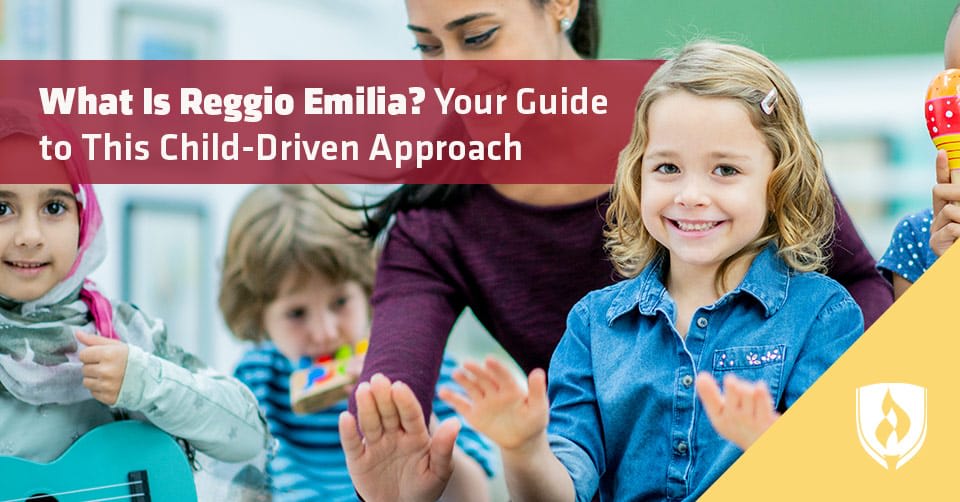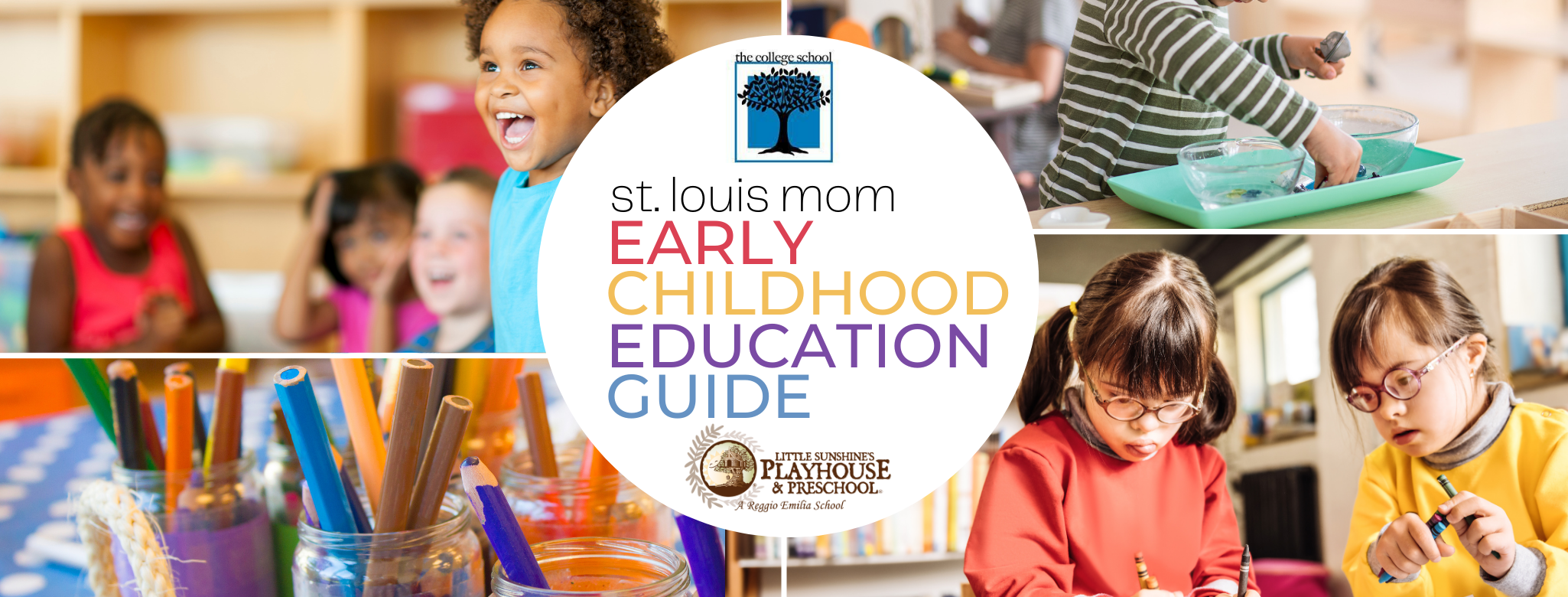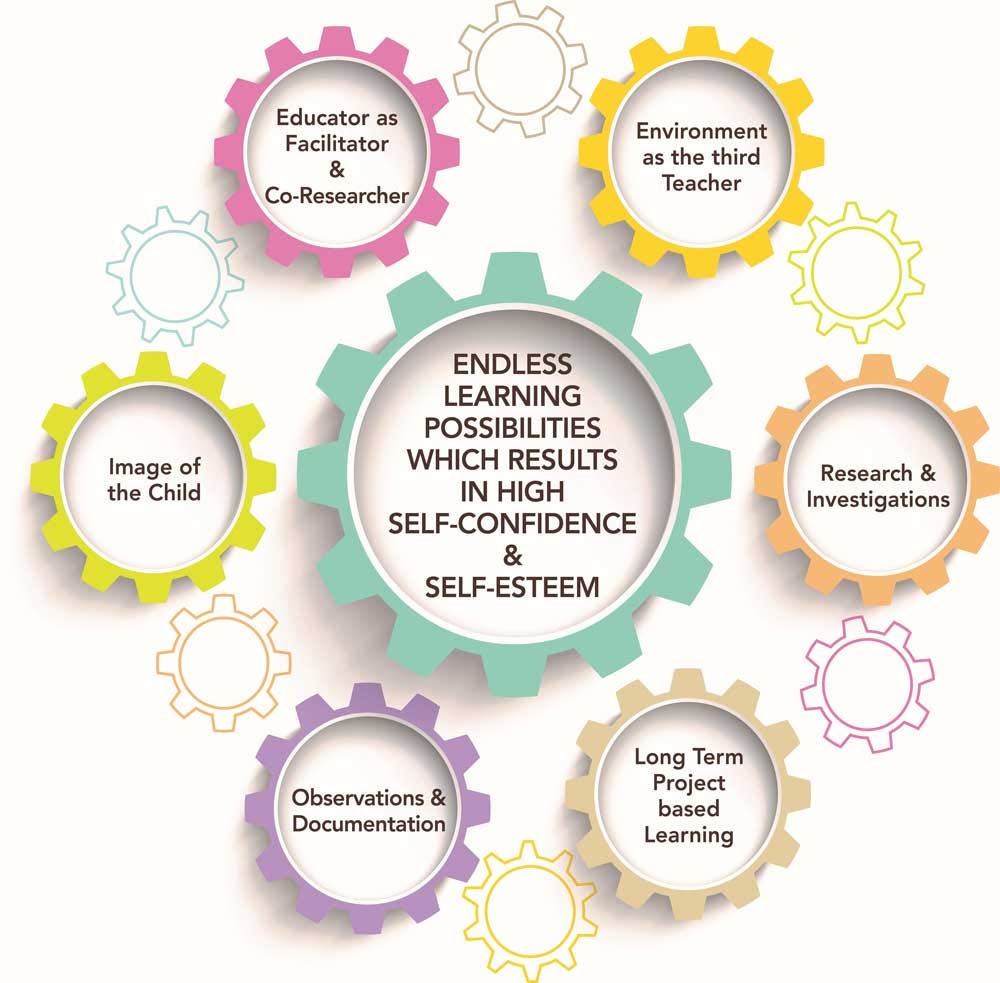The Reggio Emilia approach to early learning is a holistic approach that emphasizes the importance of the child’s environment, relationships, and experiences. This approach was developed by Loris Malaguzzi in the town of Reggio Emilia, Italy, after World War II. Malaguzzi believed that children are capable and competent learners, and that they should be given the opportunity to explore and learn in a supportive and nurturing environment.
The Reggio Emilia approach has been shown to have a positive impact on children’s development and learning. Children who attend Reggio Emilia schools have been shown to be more creative, curious, and independent. They also have higher levels of self-esteem and social skills.
If you are interested in learning more about the Reggio Emilia approach, or if you are looking for a school that uses this approach, visit our website at kienhoc.vn“>kienhoc.vn.

The Reggio Emilia Approach: A Holistic Approach to Early Learning
The Reggio Emilia Approach: A Child-Centered Approach
The Reggio Emilia approach to early learning is a child-centered approach that emphasizes the importance of the child’s environment, relationships, and experiences. This approach was developed by Loris Malaguzzi in the town of Reggio Emilia, Italy, after World War II. Malaguzzi believed that children are capable and competent learners, and that they should be given the opportunity to explore and learn in a supportive and nurturing environment.
In Reggio Emilia classrooms, children are encouraged to learn through play, exploration, and discovery. Teachers observe children’s interests and create learning experiences that are tailored to their individual needs. The environment is designed to be stimulating and inviting, with natural materials and open-ended resources that encourage children to use their imaginations.
| Characteristic | Reggio Emilia Approach |
|---|---|
| View of the child | Capable and competent learners |
| Role of the teacher | Observer and facilitator |
| Learning environment | Stimulating and inviting |
The Reggio Emilia Approach: A Collaborative Approach
The Reggio Emilia approach is also a collaborative approach that involves parents, teachers, and the community. Parents are seen as partners in their children’s education, and they are encouraged to be involved in the classroom and in the decision-making process. Teachers work together to create a learning environment that is responsive to the needs of all children. The community is also involved in the Reggio Emilia approach, and it provides resources and support to the school.
The Reggio Emilia approach has been shown to have a positive impact on children’s development and learning. Children who attend Reggio Emilia schools have been shown to be more creative, curious, and independent. They also have higher levels of self-esteem and social skills.
- Multilingualism in Early Childhood
- The Role of Music in Early Education
- Early Childhood Behavioral Management
The Reggio Emilia Approach: A Respected Approach
“The Reggio Emilia approach is a highly respected approach to early learning that has been adopted by schools around the world. This approach is based on the belief that children are capable and competent learners, and that they should be given the opportunity to explore and learn in a supportive and nurturing environment. The Reggio Emilia approach has been shown to have a positive impact on children’s development and learning, and it is an approach that is worth considering for any parent or educator who is looking for a high-quality early learning experience.”
- Managing Transitions in Early Childhood
- Developing Emotional Intelligence in Kids
- Introduction to Early Childhood Curriculum

The Five Principles of the Reggio Emilia Approach
The Reggio Emilia approach is based on five principles that guide the way teachers interact with children and create learning environments. These principles are:
- The child is the center of the learning process.
- The teacher is a facilitator and observer.
- The environment is the third teacher.
- Collaboration is essential.
- Documentation is a tool for reflection and learning.
These principles are reflected in every aspect of the Reggio Emilia approach, from the way teachers interact with children to the way the environment is designed.
| Principle | Description |
|---|---|
| The child is the center of the learning process. | Children are seen as capable and competent learners who are full of potential. |
| The teacher is a facilitator and observer. | Teachers observe children’s interests and create learning experiences that are tailored to their individual needs. |
| The environment is the third teacher. | The environment is designed to be stimulating and inviting, with natural materials and open-ended resources that encourage children to use their imaginations. |
| Collaboration is essential. | Parents, teachers, and the community are all involved in the Reggio Emilia approach. |
| Documentation is a tool for reflection and learning. | Teachers document children’s learning through photos, videos, and written observations. |
The Reggio Emilia approach has been shown to have a positive impact on children’s development and learning. Children who attend Reggio Emilia schools have been shown to be more creative, curious, and independent. They also have higher levels of self-esteem and social skills.

The Role of the Environment in Reggio Emilia Classrooms
The environment in a Reggio Emilia classroom is designed to be a “third teacher” that supports children’s learning and development. It is a place where children can explore, discover, and create. The environment is typically充滿 natural materials, such as wood, stone, and plants. It also includes a variety of open-ended resources, such as blocks, puzzles, and art supplies. These materials and resources encourage children to use their imaginations and to develop their creativity.
| Characteristic | Reggio Emilia Environment |
|---|---|
| Materials | Natural and open-ended |
| Resources | Variety of choices |
| Design | Inviting and stimulating |
The environment in a Reggio Emilia classroom is also designed to be flexible and responsive to the needs of children. Teachers observe children’s interests and create learning experiences that are tailored to their individual needs. The environment is constantly changing and evolving, as children’s interests and needs change.
The environment in a Reggio Emilia classroom is an important part of the learning process. It is a place where children can feel safe, comfortable, and inspired to learn.

The Reggio Emilia Approach in Practice: A Day in the Life
A Typical Day in a Reggio Emilia Classroom
A typical day in a Reggio Emilia classroom begins with children arriving and choosing activities that interest them. Teachers observe children’s interests and create learning experiences that are tailored to their individual needs. The environment is constantly changing and evolving, as children’s interests and needs change.
During the morning, children may engage in a variety of activities, such as playing with blocks, painting, or exploring the outdoors. Teachers encourage children to use their imaginations and to develop their creativity. They also provide children with opportunities to learn about different cultures and languages.
| Time | Activity |
|---|---|
| 8:00-9:00 | Arrival and free play |
| 9:00-10:00 | Group activity (e.g., circle time, music, art) |
| 10:00-11:00 | Small group activities (e.g., cooking, building, science) |
| 11:00-12:00 | Outdoor play |
| 12:00-1:00 | Lunch |
| 1:00-2:00 | Naptime |
| 2:00-3:00 | Afternoon snack |
| 3:00-4:00 | Free play |
The Role of the Teacher
The teacher’s role in a Reggio Emilia classroom is to observe children’s interests and create learning experiences that are tailored to their individual needs. Teachers also provide children with opportunities to learn about different cultures and languages. They encourage children to use their imaginations and to develop their creativity.
Teachers in Reggio Emilia classrooms are also researchers. They document children’s learning through photos, videos, and written observations. This documentation is used to reflect on children’s progress and to plan future learning experiences.
“The teacher is a partner in the learning process, not the director.” – Loris Malaguzzi

Final Thought
The Reggio Emilia approach to early learning is a valuable approach that can help children reach their full potential. This approach is based on the belief that children are capable and competent learners, and that they should be given the opportunity to explore and learn in a supportive and nurturing environment. If you are interested in learning more about the Reggio Emilia approach, or if you are looking for a school that uses this approach, I encourage you to visit our website at kienhoc.vn.



